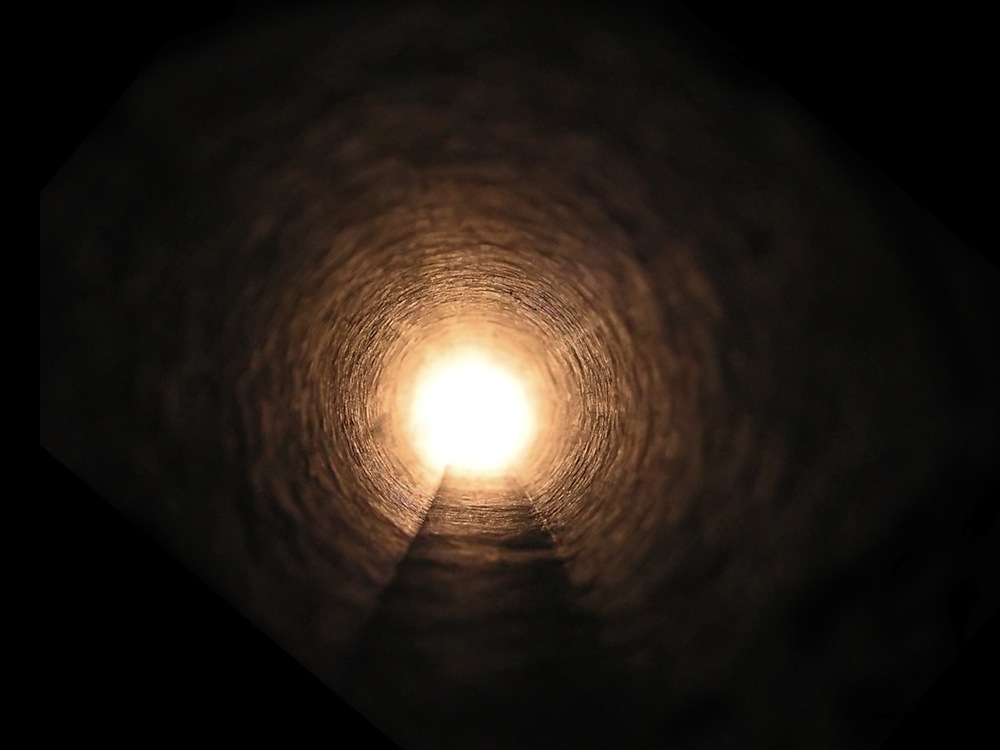
Near-death experiences could be caused by a surge of electrical firing in the dying brain, new research in animals suggests.
In the study, rats whose hearts were stopped showed a surge of brain waves associated with consciousness, according to a new study published today (Aug. 12) in the journal Proceedings of the National Academy of Sciences. The researchers measured the animals' brain activity on electroencephalography (EEG) machines.
However, "whether the animals perceive that as a white light or tunnel of light, that's something we can't know," said study researcher Jimo Borjigin, a neuroscientist at the University of Michigan at Ann Arbor.
Other experts agreed that further study is needed to determine how the study might apply to near-death experiences (NDEs) in people.
There's no way to know what the rats were experiencing while their hearts were stopped, and other studies in dying humans and dogs have found no brain wave activity that was parallel to what the researchers found in the new study, said Dr. Sam Parnia, a resuscitation researcher at Stony Brook University School of Medicine in New York, who was not involved in the study.
Mysterious phenomena
About 5 percent of dying patients and 10 percent of cardiac arrest patients describe having near-death experiences. These experiences often have similar elements, such as a feeling of being out-of-body, going through a tunnel or on a river toward a warm light, seeing lost loved ones and being told it's not time to go yet. Past research revealed that near-death experiences are more vivid than real life.
Get the world’s most fascinating discoveries delivered straight to your inbox.
But scientists strongly disagree about the source of these experiences. Some argue that near-death experiences reveal the existence of heaven or the duality between mind and body, while others claim the event is caused by a flood of chemicals in the dying brain. [Inside the Brain: A Journey Through Time]
New data
To sort out the issue, Borjigin and her colleagues examined nine rats. They induced cardiac arrest while the animals were hooked up to EEG machines, and the team then measured the electrical activity in the animals' brains.
About 30 seconds after the heart had stopped, all the animals experienced waves of synchronized brain activity that were characteristic of the conscious brain. Rats that were asphyxiated with carbon monoxide showed a similar pattern of brain activity.
The rats' visual cortex, which processes visual imagery, was also highly activated. This could shed light on why NDEs are so vivid, Borjigin said.
"They all show the fingerprints of neural consciousness at near-death is at a much higher level compared to the waking state. That explains the realer-than-real human experience," Borjigin told LiveScience.
The team believes that this electrical surge may be a mechanism the brain uses to rescue itself from a sharp drop in glucose and oxygen. Though it may not work for animals in cardiac arrest, Borjigin speculates that this mechanism spurs alertness or hyperawareness in less critical situations.
Questions remain
Parnia said that after oxygen flow to the brain stops, calcium floods brain cells as they die, and that, rather than consciousness, could explain the electrical activity the researchers saw.
Finally, the study can't explain how people can correctly recollect what happened to them minutes after their brain activity has flatlined and CPR has been started, Parnia said.
Until researchers can systematically compare the brain waves of cardiac arrest patients who have had near-death experiences with those who haven't, there's no way to know what's really going on in these experiences, Parnia said.
Follow Tia Ghose on Twitterand Google+. Follow LiveScience @livescience, Facebook & Google+. Original article on LiveScience.com.

Tia is the editor-in-chief (premium) and was formerly managing editor and senior writer for Live Science. Her work has appeared in Scientific American, Wired.com, Science News and other outlets. She holds a master's degree in bioengineering from the University of Washington, a graduate certificate in science writing from UC Santa Cruz and a bachelor's degree in mechanical engineering from the University of Texas at Austin. Tia was part of a team at the Milwaukee Journal Sentinel that published the Empty Cradles series on preterm births, which won multiple awards, including the 2012 Casey Medal for Meritorious Journalism.


